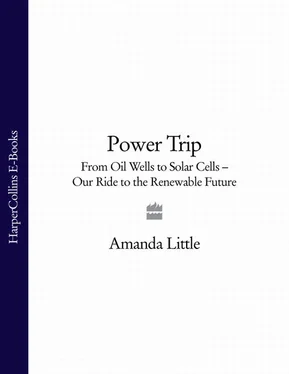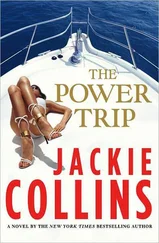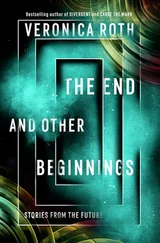Power Trip
From Oil Wells to Solar Cells–Our Ride to the Renewable Future
Amanda Little
 Harper Press
Harper Press
For CARTER trip leader, power source
Cover Page
Title Page Power Trip From Oil Wells to Solar Cells–Our Ride to the Renewable Future Amanda Little Harper Press
Dedication For CARTER trip leader, power source
Introduction Confessions of a Petroleum Addict
Part One - LIFE, LIBERTY, AND THE PURSUIT OF OIL
Chapter 1 - Over a Barrel
Chapter 2 - War and Grease
Chapter 3 - Road Hogs
Chapter 4 - Plastic Explosive
Chapter 5 - Cooking Oil
Chapter 6 - Chain of Fuels
Chapter 7 - Short Circuits
Part Two - GREENER PASTURES
Chapter 8 - Earth, Wind, and Fire
Chapter 9 - Autopia
Chapter 10 - City, Slicker
Chapter 11 - Fresh Greens
Notes
Bibliography
Index
Acknowledgments
About The Author
Praise
Copyright
About the Publisher
Introduction Confessions of a Petroleum Addict
The trouble started on an August afternoon in a remote field in northern Ohio, miles from any town large enough to be marked on a standard road atlas. The field was empty except for scattered deciduous trees—maple, poplar, oak—thick with late-summer leaves. The ground was scrubby and parched. A nearby river rolled lazily in the summer heat. The only trace of humanity hung above the trees—an electrical cable known as the Harding-Chamberlin Line, carrying 345,000 volts of power.
By three o’clock the air temperature had risen to 90 degrees, and the cable itself had reached nearly 200 degrees Fahrenheit—roughly twice its average temperature. The aluminum core of the 3-inch-thick wire was expanding with the heat and beginning to sag.
Five hundred miles due east of that meadow I was sitting at my desk in New York City when, at 4:09 p.m., my computer suddenly shut down. The lights, music, and air-conditioning died. I heard a strange lurching sound as the elevator in my building froze with passengers trapped on board. I rushed to the window along with my officemates and was amazed to see traffic snarling to a halt up the entire length of Broadway as street signals went black. The Verizon landlines were dead and our cell phones had no signals. We hurried down eleven flights of stairs, into streets already thickening with crowds of evacuees. Storefronts, groceries, and cafés were darkened. Subway stations were emptying of travelers as word spread that the trains had no power and hundreds of people were stuck underground. It was 2003, and like most New Yorkers, we initially jumped to the same conclusion—another terrorist attack.
What had in fact happened to us, and to a majority of the residents of the metropolitan areas of New York, Newark, Baltimore, Cleveland, Detroit, and Toronto, was a blackout—larger than any other blackout in recorded history. One of the greatest achievements in industrial engineering, the 93,600 miles of electrical cable known as the Eastern Interconnection, had been brought to its knees. All because of unseen events in that distant Ohio meadow where an overloaded wire had drooped into high tree branches and short-circuited, triggering a massive cascade effect throughout the aging power grid.
As night fell, I walked up to Times Square to see its flashing billboards snuffed out, leaving the commercial El Dorado quaint and sheepish. I passed the main post office building and Bryant Park, where thousands of stranded commuters were sprawled in a mass slumber party, using their suit jackets and briefcases as pillows. Candlelight flickered in apartment windows, and I looked up past the walls of darkened buildings at a sky so brilliant with stars I could make out the soft haze of the Milky Way and the faint pulses of orbiting satellites.
Before-and-after satellite images of the event tell the story. In the first picture there is a thick streak of foamy white across the northeastern portion of the United States and southeastern Canada. In the second is just a scattering of faint droplets, the rest absorbed into the blackness of space. Fifty million Americans were without power.
Up to that point, I had spent most of my brief career as a journalist trying to gain a better understanding of the causes of just such events—an understanding, more broadly, of the strengths and vulnerabilities of America’s complex energy landscape. The US is, after all, both a global leader in green innovation and the world’s largest energy consumer, struggling to cope with its huge appetite for fossil fuels and their by-products. We face a tremendous industrial dilemma and an extraordinary economic opportunity to develop a clean, independent energy system that could set an example to the other industrialized nations of the world. In the calm and darkness of the twenty-four-hour blackout I began to see this bigger picture. I began to understand how little I actually did know about the changes we face, and how much I still had left to learn.
Just out of college in 1997, I had started out as a technology reporter, swept up in the exuberance of the dawning digital age—when stock prices jumped from 60¢ to $60 overnight, and business plans scrawled on cocktail napkins could get six-figure backing. I went on to write “Urban Upgrade,” a column in the Village Voice about how digital technology was transforming New York City—from Wall Street’s trading floor to the billboards of Times Square—into an intelligent, networked, high-speed metropolis.
The more I learned over time about New York’s electricity grid, the more shocked I was to discover that the torrent of pixels and megabytes newly pulsing through the city was sustained by an antiquated grid no smarter than a plumbing system—and much harder to repair. Moreover, this system was powered by the decidedly unfuturistic force of fossil fuels (specifically, coal and natural gas). I began to wonder: as cell phones, PDAs, ATMs, iPods, laptops, and flat-screen televisions proliferated, how long could this brittle grid hold up, and what kind of impact would these new pressures have on the environment?
My interest in America’s energy dependence redoubled after the events of September 11, 2001, this time focusing on a different aspect of our fossil fuel usage—the oil that powers our cars, trucks, buses, ships, and airplanes. That morning I was riding my bike over the Brooklyn Bridge into Manhattan when, at 8:46 a.m., I watched the North Tower of the World Trade Center explode suddenly, inexplicably, into flames. All movement—cars, bikes, pedestrians—froze. From where I stood on the crest of the bridge I saw, in the foreground, the orange plume of fire flaring skyward from the building. (It was ignited, we would soon learn, by 11,000 gallons of jet fuel from the tanks of American Airlines flight 11.) Dwarfed in the background was a dim fleck of light wavering from the Statue of Liberty. This attack and its tragic consequences would not have happened, as news coverage following the event made clear, without our presence in the Middle East—a presence closely tied to our reliance on the oil reserves heavily concentrated in that region.
The months after September 11 revealed further evidence of vulnerability and change in our energy system. Petroleum prices soared in response to the attack, as speculators feared interruptions to the flow of oil between the Middle East and the United States. Meanwhile, a group of two thousand scientists who constitute the Intergovernmental Panel on Climate Change came out with a landmark (and widely ignored) report declaring that global warming was accelerating faster than ever predicted—a phenomenon largely driven by our use of fossil fuels, which release carbon dioxide and other greenhouse gases into the atmosphere when burned. Then Enron, one of the world’s leading producers of electricity and natural gas, collapsed into bankruptcy amid revelations of widespread corporate fraud.
Читать дальше

 Harper Press
Harper Press










